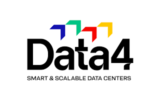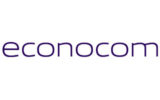Energy efficiency plan: what role can data centers play in 2023?
At the end of 2022, the French government presented its energy efficiency plan, calling for a "general mobilization" to cope with rising energy costs and, above all, the risk of shortages. This plan urged data centers that host data to further limit their use of air conditioning. While data center operators have been taking steps for several years to continuously improve their energy performance, they are nonetheless constantly on the lookout for innovative ways to become more energy-efficient.
Increasing temperatures in data centers: a major project
The French government’s energy efficiency plan calls for limited use of air-conditioning in data centers, infrastructure permitting. According to France Datacenter, a change from 21 to 23 degrees Celsius in computer rooms is likely to reduce energy consumption by around 7 to 10%.
Although IT equipment can now withstand higher cooling air inlet temperatures, raising the overall temperature of data centers requires a thorough understanding of the specific features of air conditioning equipment, electrical equipment and IT equipment hosted in computer rooms, and in particular of all the necessary air flows. However, compliance with the temperature increase guidelines is not enough to achieve significant results. This needs to be accompanied by infrastructure improvements such as aisle containment, optimized cooling systems and modular facilities.
Optimization projects of this kind require an in-depth analysis phase to take into account all data center parameters: surface area, hardware power, load rates, physical infrastructure, cooling systems, air flow, environmental constraints (dust, humidity levels, etc.), technical maintenance of equipment, etc. Whatever actions need to be taken, a solid strategy needs to be drawn up beforehand, in which short-term actions serve as the foundation for subsequent operations, in order to maximize the energy-saving potential of each data center with longer-term actions.
What’s more, in addition to raising the temperature in IT rooms, energy savings can be achieved without major investment, simply by improving facility management and mobilizing stakeholders. These best practices are notably shared between peers as part of the CUBE Datacenters project, a national competition for energy savings in the digital sector, the first edition of which was launched in January 2023.
Energy efficiency in data centers: IT also has to be considered
In addition to reducing the energy consumption of data center infrastructures, we also need to consider and reduce the energy consumption of corporate information systems.
Information systems include elements such as software and IT equipment, networks and service platforms, as well as data and application governance. The way in which all these elements are designed and managed determines the hosting infrastructure required and, consequently, the energy needed to guarantee continuity of service for information systems.
Until now, IT solutions and infrastructures have been designed without any thought for energy consumption: an abundance of functions that are not necessarily all useful or used, large server capacities allocated from the outset to support future business growth (even if this later turns out to be weaker than anticipated), or rich application interfaces that are cumbersome and therefore place high demand on IT resources, and consequently energy resources.
To maximize achievable energy savings, it is essential to have a comprehensive understanding of the information system, and to build a long-term approach to energy efficiency. In other words, the aim is to assess the existing situation based on realistic data and feedback from the field, so as to be able to define the actions needed to strike the right balance between needs and resources. This means avoiding oversizing wherever possible.
Energy efficiency also means digital efficiency
To implement a digital efficiency project, it is essential to identify potential areas for improvement. The first step is therefore to identify and quantify the environmental impacts of digital services, including energy consumption, over their entire life cycle, from the extraction of the resources required for their design, through the use and production of material flows in the usage phase, to their recycling at the end of their life cycle.
The quantification of environmental impacts must be based on an established frame of reference, using data provided by Ademe or the NegaOctet consortium, for example. At a given moment, it enables us to identify the measures to be taken to reduce energy consumption and environmental impact without transferring pollution. For example, replace IT equipment at the right time: neither too early, to avoid frequent replacements with a high environmental impact, nor too late, prolonging the use of energy-hungry equipment unnecessarily.
These analyses need to be carried out both at the design stage of a digital service and during its operation, on a regular basis, to continuously optimize digital services and keep them as close as possible to their optimum potential efficiency.
Innovations and energy efficiency
Looking forward, successive innovations are contributing to the future energy efficiency of data centers: increasing the capacity of IT equipment at an equivalent ecological cost, progressive development of solutions using the data center’s immediate environment (air or water) as an input for cooling or as an output for heating nearby buildings (use of waste heat), or the application of innovative cooling techniques. This is the case, for example, of cooling servers by immersion in non-conductive oil: in addition to considerably reducing the energy consumption of data centers, this solution recovers and reuses the waste heat produced by servers, facilitates the relocation of data centers as close as possible to the points of use, and reduces the space taken up by the cooling system, with all the economic and ecological benefits that this entails.
As these innovations are deployed, and as facilities become more tightly controlled, data centers should therefore significantly improve their energy efficiency and reduce their environmental footprint.
By Soumia Hattali, Green IT Project Manager, APL Data Center.




















